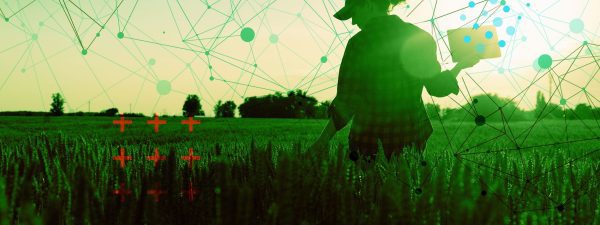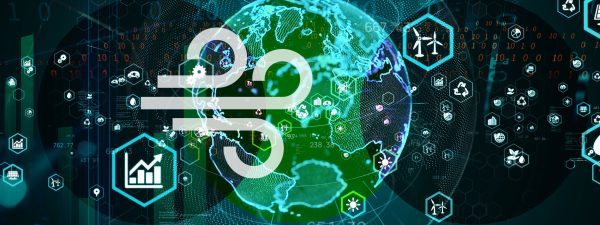The Internet of Things (IoT) has successfully digitized countless ordinary tasks that we perform on a daily basis. Even simple objects – such as lights, doors, and even vehicles – have become smart, as long as they’ve been outfitted with the necessary sensors and software.
With the help of data analytics, data captured by IoT devices can be analyzed to improve process efficiency, and predict trends and outcomes. Indeed, the IoT has paved the way for innovation within various sectors of society.
IoT has even been deemed a necessary foundation of Industry 4.0. Also known as the Fourth Industrial Revolution, Industry 4.0 includes improvements in artificial intelligence (AI), IoT, robotics, 3D printing, and quantum computing that are now innovating how industries work.
Industrial IoT defined
In a nutshell, the Industrial “Internet of Things” uses IoT devices for manufacturing and similar industrial processes. This “Industrial Internet,” as it’s sometimes called, is poised to change the way goods are manufactured, with the use of intelligent machines or IoT devices.
After all, data is critical to maintaining good manufacturing. Specifically, IoT will change how data is captured, stored, and analyzed. Real-time data analytics can now be performed with IoT devices, transforming a traditional industrial factory into an intelligent industrial IoT factory.
Smart machines can record data much more reliably and quickly than manual data recording mechanisms. What’s more, smart machines can enable data transfer at a significantly faster pace compared to traditional methods of sending reports and data.
Industrial IoT under the hood
In industrial IoT, specialized smart equipment equipped with actuators and sensors enables engineers and supervisors to oversee operations (even sometimes remotely) and spot problems and inefficiencies instantly. This, of course, saves valuable time and money.
Data analytics can also be used to check for issues and opportunities for improvements. Industrial IoT can assist in quality control, pollution reduction, logistics enhancements, and various, similar functions in manufacturing.
Similarly, manufacturers using industrial IoT can benefit from data trends, such as when a particular part or piece of equipment is showing signs of wear and tear. This can help management decide on preventive maintenance procedures in advance and reduce the risk of workplace accidents.
In addition, since the IoT is a group of interconnected devices that can sense, relay, and store valuable data, this data can be transferred to other IoT devices at high speeds and low latency, thanks to 5G technology.
The growth of 5G will also positively affect industrial IoT devices. But, how? First, 5G is currently one of the fastest means of device communication with its high throughput and low latency. Indeed, 5G yields a real-time transfer of data up to 20 Gbps (gigabits per second) with a latency of less than a millisecond.
Before 5G, high-speed private networks were required. But now, 5G’s real-time data updating abilities can support extensive infrastructures, such as entire industrial complexes. In fact, 5G-enabled IoT is projected to be able to power entire smart cities in the future.
Industries Using Industrial IoT
Because of its myriad benefits, many major industries have adopted industrial IoT. The automotive industry, for example, has started using intelligent factories equipped with industrial IoT for manufacturing processes.
Automobile manufacturing has already been heavily mechanized, with the use of robots, for example, and the industrial IoT has helped to ensure the smooth operation of these robots.
The agriculture industry is another player using industrial IoT. In the ag industry. We can look forward to industrial IoT-equipped farms with numerous IoT devices measuring ambient settings such as soil moisture and nutrient contents. These settings can help farmers optimize their crop growth.
Industrial IoT also benefits manufacturers and distributors of oil and gas. For example, automated systems can detect problems in logistics, while sensors can detect pipeline issues. While sensors have been used for decades, using industrial IoT devices as sensors will allow faster and more proactive responses to issues. Industrial IoT is also expected to be able to assist with asset management, especially since logistics plays a vital part in any industrial process.
Industrial IoT has the capability not only to check if certain items are present, but also check the quality of the items in question. In addition, thanks to hyperfast communications, industrial IoT devices can quickly inform management if certain items are in disrepair or at risk of failing, making maintenance more proactive.
Nanotechnology is also a game-changer, as nanotechnology-enabled IoT devices can prove helpful with machine maintenance without downtime.
As the industrial IoT continues to explode, the demand for labor might slightly dip because of further automation. However, the need for data scientists and engineers will continue to rise as more industries adopt industrial IoT systems.
For example, International Data Corporation (IDC), a global market intelligence firm, estimates that, by 2025 about 55.7 billion devices will be connected, with approximately 75 percent of these devices comprising part of an IoT network. IDC also estimates that, in total, these IoT devices will generate more than 70 zettabytes of data by 2025.
Privacy, please
Of course, big data comes with considerably increased responsibility. For example, data privacy has been a cornerstone of data management, with many countries enacting laws to ensure the security and privacy of sensitive data. In addition, data from sensitive manufacturing processes are at risk of being stolen by competitors, forcing tech companies to enact safeguards in data security.
This is why many industrial IoT device manufacturers are pairing up with technology security companies to ensure that data is secure.
Cultivating the industrial landscape
Industrial IoT will further catalyze digital innovations, especially as more sectors attempt to digitize their processes.
Additionally, data analytics will undoubtedly play a more prominent role as more organizations take advantage of the revolution that is Industry 4.0. The use of IoT data will also help organizations to adapt to changing conditions rapidly and respond more proactively. It seems that Industrial IoT is well on its way to impacting the industrial landscape.
Reference:




